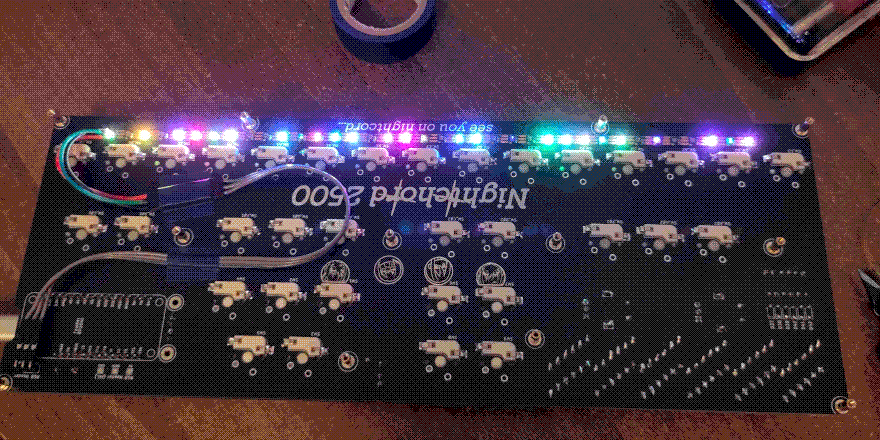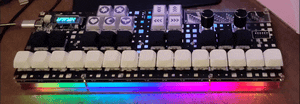Keebs (Computer Keyboards)
This is the keyboards page! Scroll below to see the keebs...
Sofle
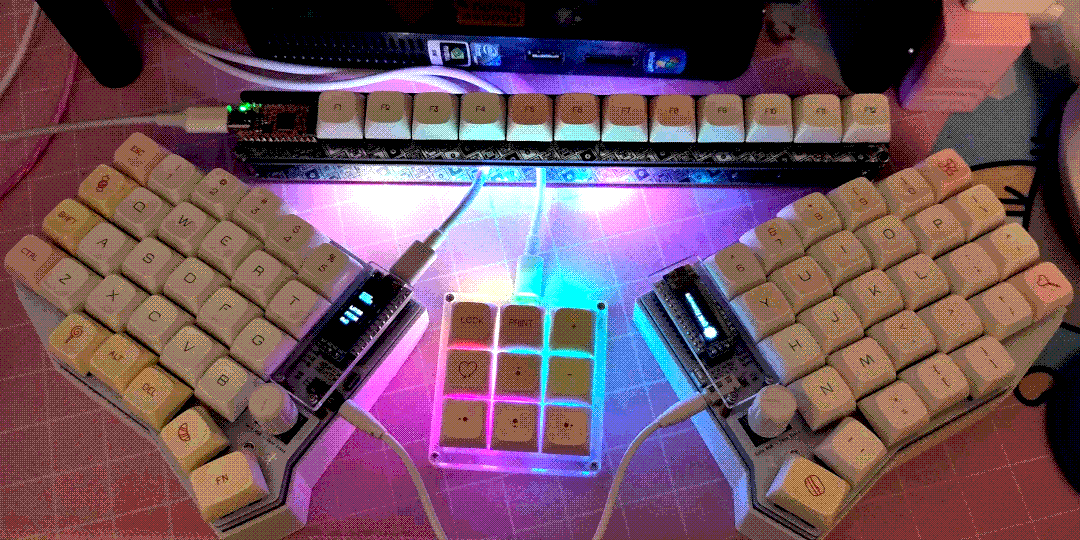
The Sofle is my daily driver. It's comfortable, has just enough keys (well, mostly), the encoders are great, it's hotswap, there's just not a lot wrong with it. This was the first keyboard I actually assembled myself and it bears some corresponding scars (this is technically the Sofle RGB, but that's never happening), but three years in it's still going strong. Keycaps are a cheap dyesub set I got from AliExpress (XDA Macaroon).
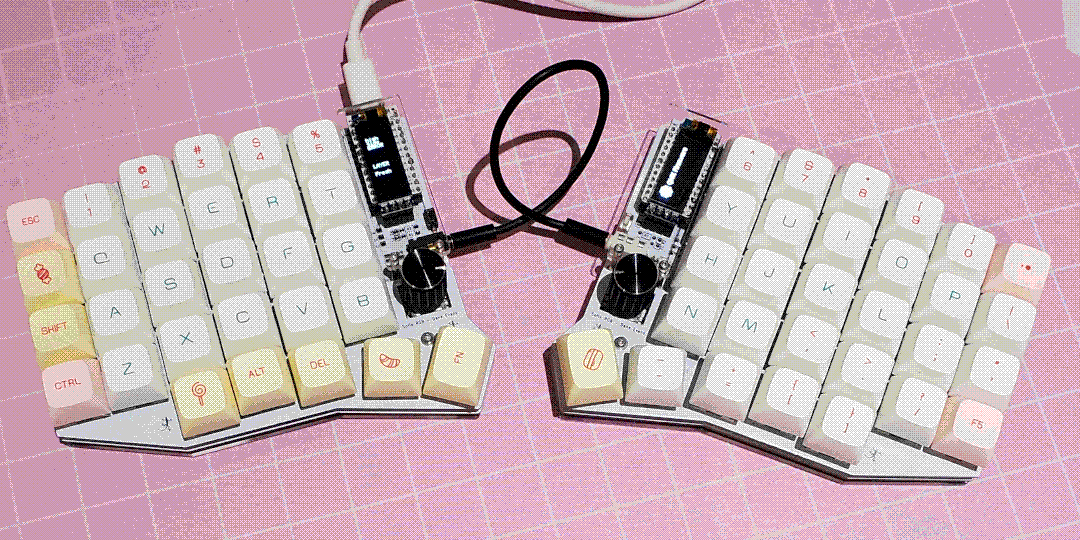
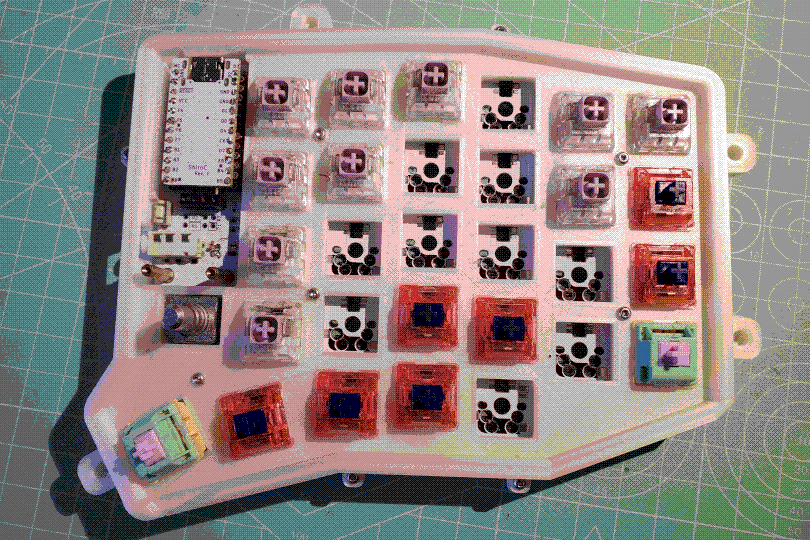
YMD09 macropad
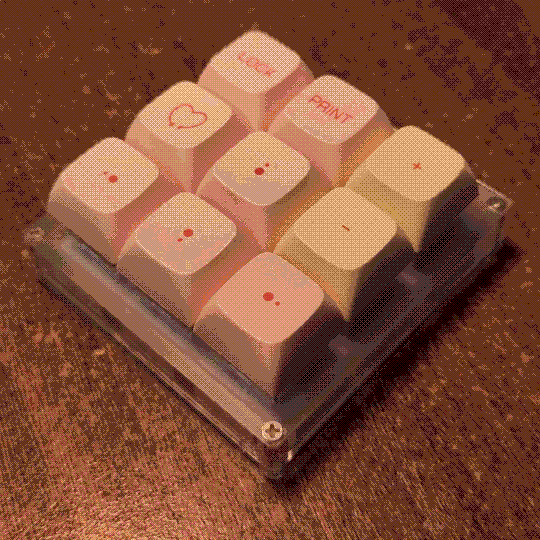
This was actually the first mechanical 'keyboard' I got, which let me test out keyswitches and mess around with QMK a bit. It's stayed at the centre of my setup for when I actually need arrow keys (or printscreen), which it delivers with some delightfully clicky Kailh Speed Bronzes. Keycaps are a cheap dyesub set I got from AliExpress (XDA Macaroon).
BackRowPad
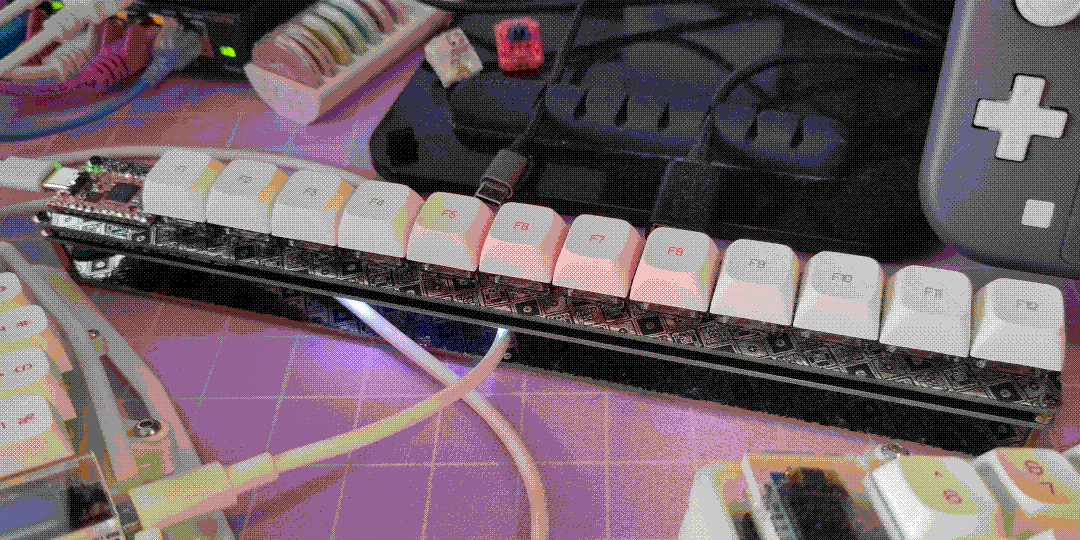
The BackRowPad is a... macropad? function row replacement? of my own design, created as a first keyboard project to get familiar with the design concepts and PCB ordering. That said, it's hotswap, has support for RGB strip underglow, and everything works flawlessly. Keycaps are a cheap dyesub set I got from AliExpress (XDA Macaroon).
The KiCAD files and QMK firmware for this board are available here, as well as a rough assembly guide!
dumbpad
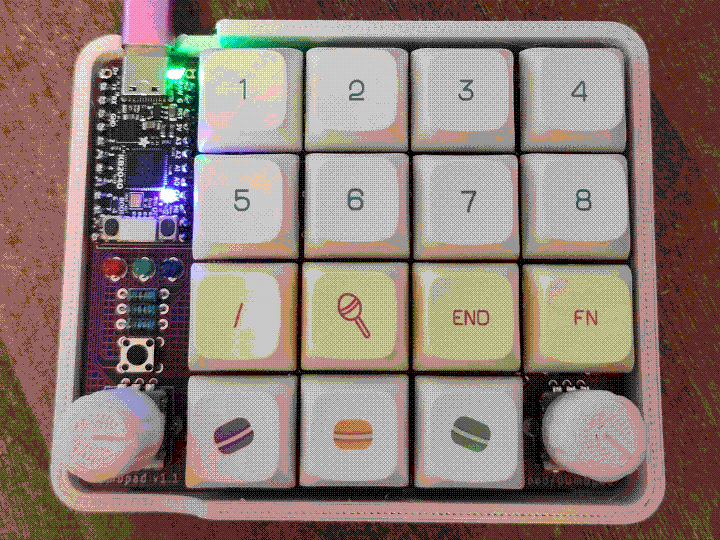
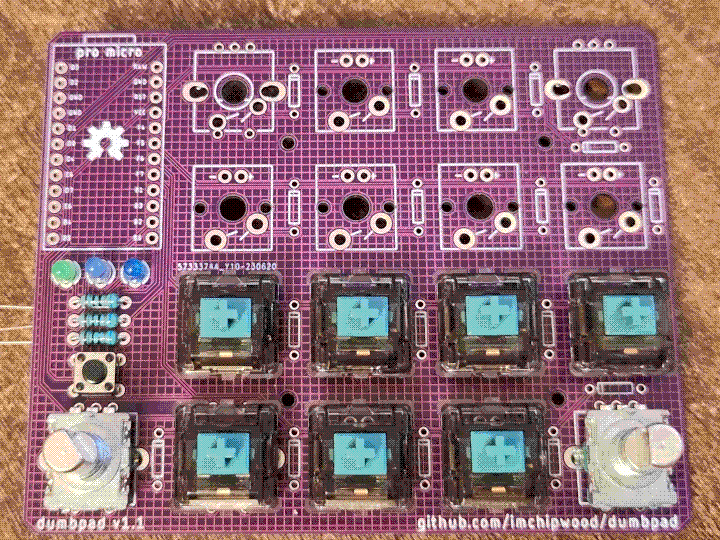
The dumbpad is a 4x4 (plus or minus a couple of encoders) macropad. Honestly I just got some PCBs along with a different order because they were cheap and I wanted to try the purple silkscreen, but I'm pretty glad I did: it's simple, easy-to-assemble, and you can do some pretty powerful stuff with the available keys and a couple of encoders. I have it set up for use with Krita, and it works like a charm. Keycaps are a cheap dyesub set I got from AliExpress (XDA Macaroon).
PocketType
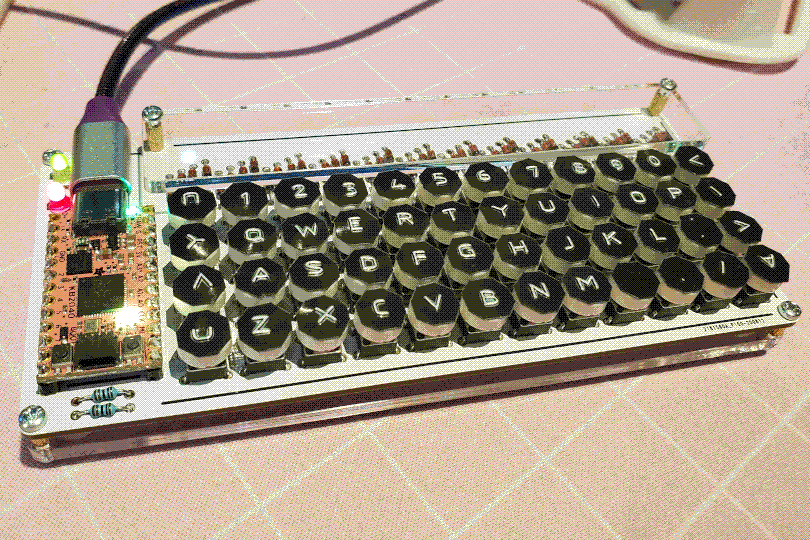
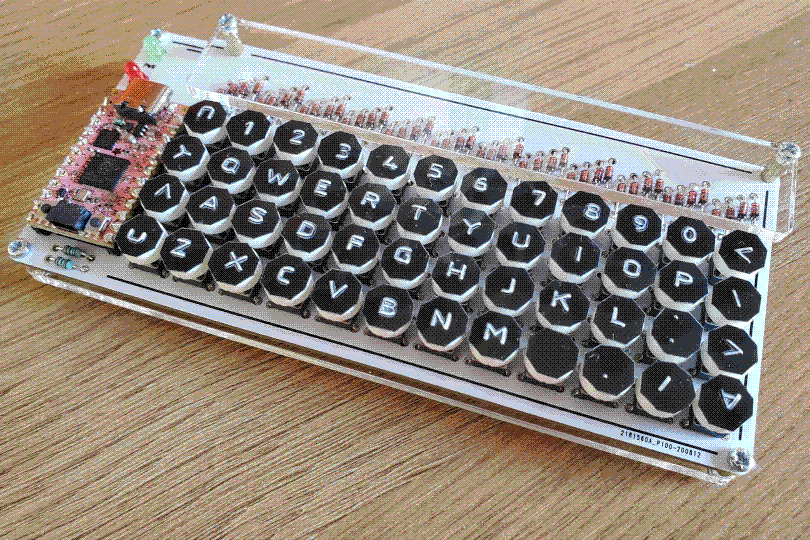
The PocketType is a very small keyboard that, true to its name, can fit in reasonably-sized pockets. The switches that had to be used to make that happen don't exactly provide the best typing feel, but it does work in a pinch and years of using a BlackBerry keyboard actually made me alright at using it. The keycaps were supplied with the kit, but I made all the labels myself with an emboss label maker! This keyboard also inspired one of my worse ideas...
Cerberus
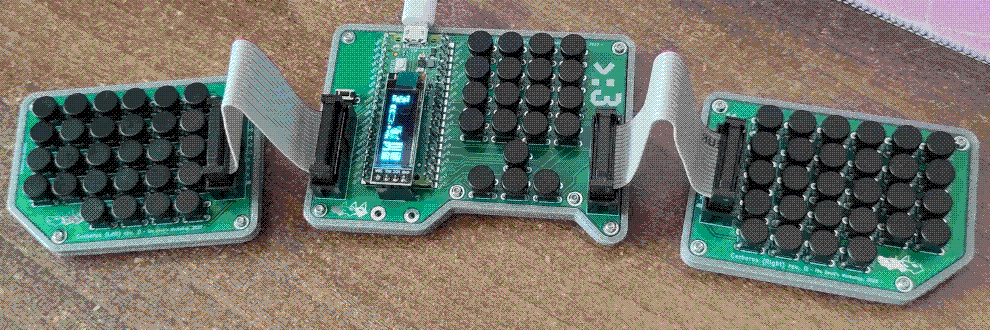
The Cerberus is another one of my own creations. It's a "triple-split" keyboard where all the row and column connections are made directly to the central board, without multiple microcontrollers communicating like a typical split keyboard design. It's also tiny, using the same type of switches as the PocketType, but for some reason the ones I got were extremely wobbly and difficult to type on. It also uses a "full-size" Raspberry Pi Pico instead of something in the Pro Micro form factor in order to have enough pins to make all the connections on a single microcontroller. It does work and everything, and looks pretty cool, but... I maybe should've asked "why" first.
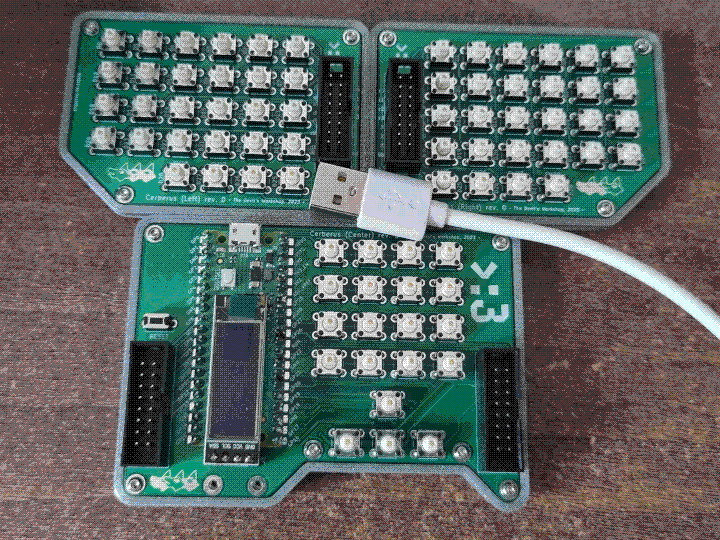
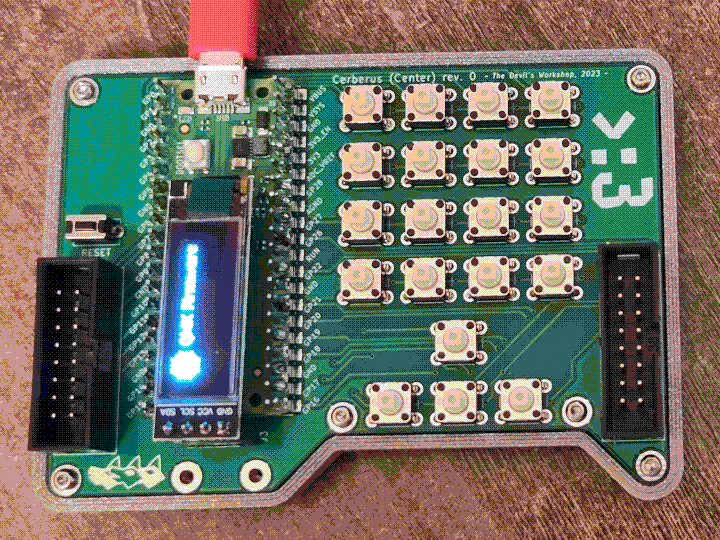
Manta

The Manta by rainkeebs (out of production, but has been revived as the Fanta-Manta) is a cool little keyboard, in a compact if not quite pocketable form factor. I don't use mine much, but honestly that's mostly because I didn't put any labels on the keys - as long as you remember where the keys are, you can get very far with QMK layers. I also assembled mine with some clicky Kailh Robin choc switches, for a sleek, low-profile board. This was also one of the first keyboards I assembled alongside my Sofle, and it went mostly alright! The keycaps are some generic transparent choc caps from AliExpress.
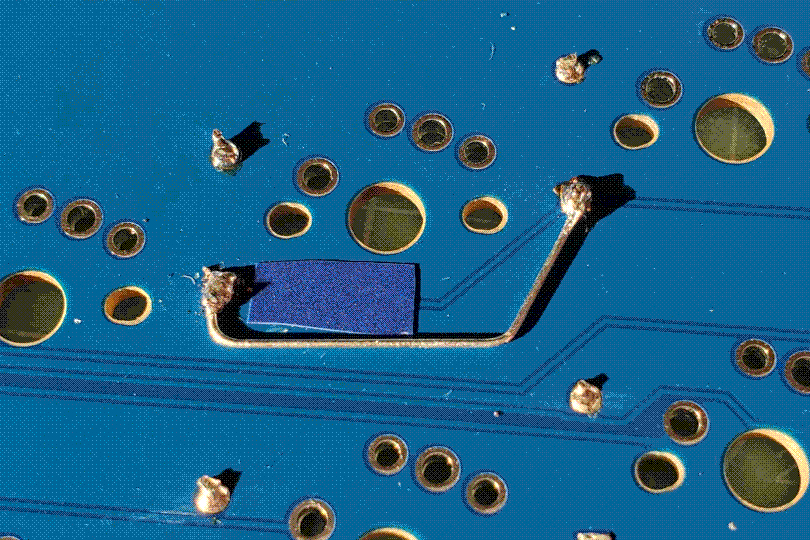
Nightchord 2500
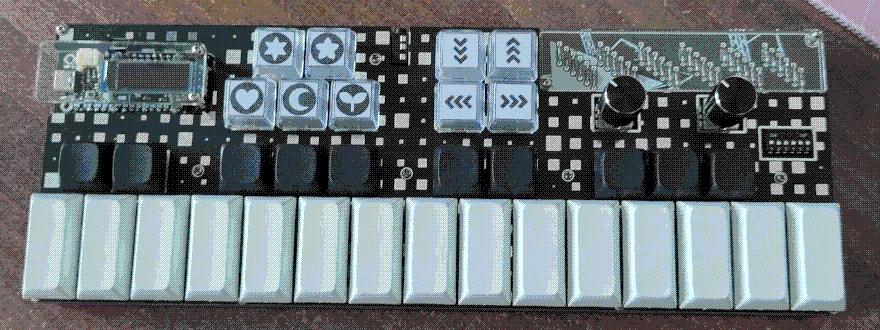
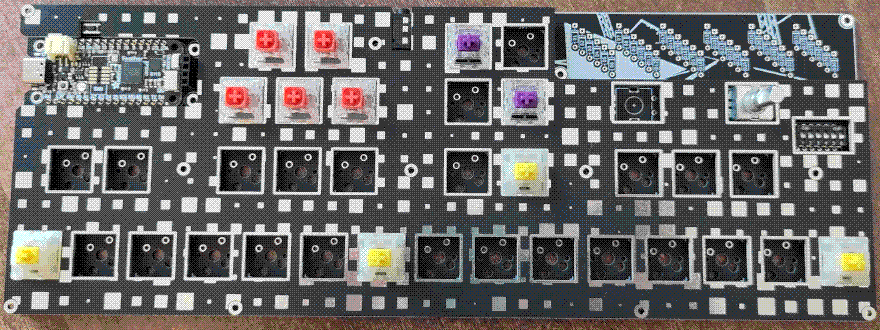
The Nightchord 2500, another design by me, isn't really a "computer keyboard". Instead, it's a QMK-powered MIDI keyboard. It's fully functional, with hotswap, encoders, an OLED display, RGB strip header, and some DIP switches for added customization. The only thing that I haven't tested yet is the split keyboard functionality (to get four octaves instead of two), but that's just because I haven't gotten around to building another one yet. This one also uses a nonstandard microcontroller, an Adafruit Feather (RP2040), since a Pico was too long and a Pro Micro didn't quite have enough pins for what I wanted. And yes, it was named after the Project Sekai group. Black keycaps are XDAs from AliExpress, white keycaps are DSAs from Signature Plastics, and the transparent customized ones are from Adafruit.
